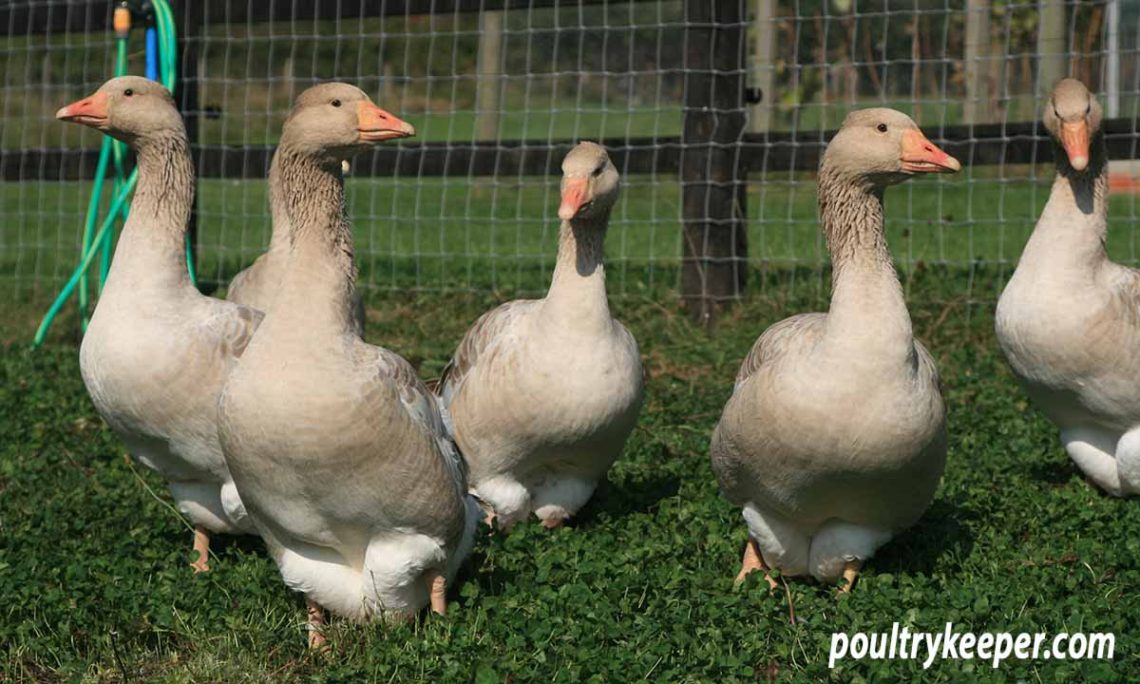
Growing geese at home – how to breed them
Poultry farming is considered to be one of the main sources of income in rural areas. In home gardens and farms, the breeding of waterfowl, in particular, geese, has proven itself well. Growing geese at home does not require large feed costs, will provide the family with high-quality healthy products and will bring significant income.
The goose is bred as a slaughter bird in order to obtain meat, fat and feathers. The rationality of goose breeding is from 70 to 100% on investments spent. The presence of nearby water bodies and ravines significantly increases the profitability of waterfowl rearing. In this case, adult birds and young goslings do not need to be fed in the summer. Geese are hardy, if necessary, they are content with artificially created small reservoirs in the form of a trough or a vat of water buried in the ground.
Growing geese can become a highly profitable business. Contributing factors are the relatively low degree of competition and the high level of profitability of cultivation. The demand for goose meat, liver and feathers is constantly growing. The content of high-quality fat in the goose carcass is 46%. This by-product of goose breeding is valuable for its healing and water-repellent properties. Goose down is used in light industry, liver is a valuable delicacy. Growing geese at home should be as close as possible to natural conditions. Birds spend most of their time in their natural habitat grazing, and for successful breeding they need a large area for walking.
Features of feeding geese during home cultivation depend on a number of factors – the time of year, the age of the bird, the abundance of feed on the natural pasture. In the warm season, adults have enough food in natural meadows and pastures, where they eat up to two kg of green grassy mass.
With a lack of natural food, organization is necessary feeding geese up to two times a day. With a single feeding in the evening, grain is added to the bird’s diet. Double feeding is done in the morning and in the evening, before sunset. The morning addition of the diet consists of a wet mash, in the evening you can pour dry grain into the feeder.
Contents
Feeding geese in winter
The composition and amount of the bird’s daily diet directly depend on the seasonal factor. The question arises: how to feed geese at home during the cold period? In winter, farmers prefer to feed the birds with oats. Oats are considered the best food, it, unlike corn, does not cause unwanted obesity in geese.
Particular attention should be paid to the diet of poultry in the preparatory and breeding periods. During this period of time, geese require a special combined diet. Feed is given 4 times a day, in the evening grain is poured into the feeders and fed 3 times with wet mash.
In normal times, the feeding regimen is three times a day. For a high level of egg production, special diets have been developed with a high content of protein and vitamin supplements. The main requirement is a balanced diet. During the tribal period be sure to use supplemental food. It will prevent the weight loss that occurs in males at this time.
Supplements during the breeding period
- hay
- steamed clover
- nettle
- raw potatoes
- carrot
- beet
- cake
- meal
- premixes
The addition of animal protein is also recommended. The beginning of the breeding period for geese occurs in February or March. Minerals are added to the diet of birds – crushed shell rock and limestone.
These supplements are recommended to compensate for the increase in mineral metabolism during the productive period. Limestone and phosphate should make up to 3% of the diet each separately, the content table salt in food is allowed up to 0.5%. It is also necessary to control the content of vitamins in feed, especially vitamin A.
Supplementary food for males
- sprouted oats up to 100 gr.
- dry yeast up to 5 gr.
- fish oil up to 2 gr.
Males are given additional food only after the release of females to pasture. Otherwise, the males will ignore the additional food. Getting used to feeding will come in a few days. After feeding, male geese are also released for walking. In goose breeding, locally produced feed is most often used. These are carrots, greens, various root crops and their tops, silage and wheat flour.
Feeding goslings
Feeding and keeping small goslings is due to a number of distinctive features. Goslings begin to feed immediately after they dry out. In the first 8 days of life small goslings need food rich in fiber. Such a diet will help to avoid developmental delays. During this period of time, goslings are fed up to 7 times a day.
Until the age of one month, goslings must be protected from cold and drafts, they must be in warm rooms. It will not be superfluous to clarify that adult geese, for all their endurance, do not tolerate drafts well. Then the young animals are placed in unheated rooms or pens, equipped with a roof, with a bed of chopped straw. In the warm season, from the first days, goslings can be let out for walks, from a month old, water walking is possible. Goslings need to be accustomed to a pond or other body of water gradually.
The main food of small goslings older than three days of age is compound feed with the addition of premixes. Fresh chopped green mass, wet mash from skimmed milk, greens, chopped eggs, crushed grain and peas, mashed cottage cheese and scalded nettles. After 2 weeks, the diet of goslings should be diversified with boiled potatoes, mixed with bran and cabbage leaves.
For the first three days, the diet of little goslings consists of mashes made from crushed corn, ground barley flour without shells and wheat bran. You can give them oatmeal dough in milk and white bread soaked in water. Compound feed for small goslings should contain grain, protein, dry yeast and useful trace elements. Remember to keep feeders clean. Greens intended for goslings should be fresh and juicy, it is better to mow it in the morning and evening.
goslings well eat clover, alfalfa, peas. Sluggish greens and plants with rough stems do not suit them. Mowed grass is better to give immediately after delivery from the field. Place it in the nursery feeders, part of the grass can be chopped to a small size and added to the feed. Be sure to remember about the nutrition of goslings in the early hours of the day, at dawn. Mineral additives and crushed gravel should be poured into special feeders. The amount of water in the drinkers should allow the goslings to wash their beaks. Otherwise, the little gosling may die due to clogging of the nasopharynx.
Geese have incredible stamina, are suitable for cultivation in various climatic zones and in home garden conditions. The domestic goose is unpretentious, incapable of flight and will not cause much trouble. He requires a minimum amount of cereal top dressing, which makes raising geese profitable, and does not require large expenses.





